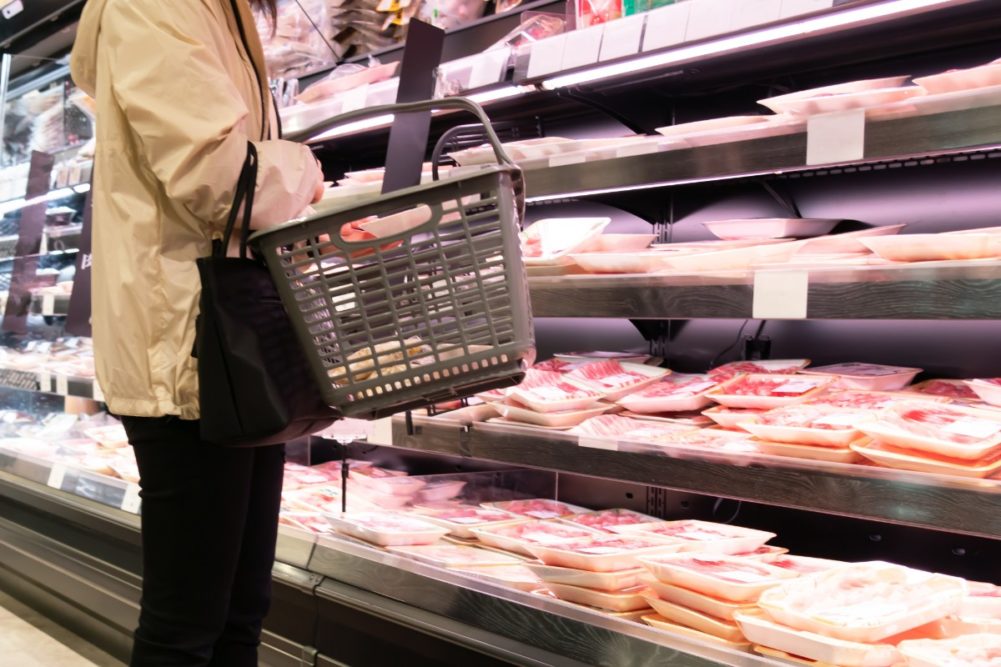WASHINGTON – Meat associations and the National Economic Council (NEC) for the Biden Administration are once again battling over the supply chain difficulties and the rise of inflation throughout the United States.
In a recent post on the White House Briefing Room Blog, officials acknowledged that many of the issues seen across the country result from the COVID-19 pandemic and supply chain difficulties. However, the post also said that prices are going up due to a lack of competition in meat processing.
“As we noted in September, just four large conglomerates control approximately 55-85% of the market for pork, beef, and poultry, and these middlemen were using their market power to increase prices and underpay farmers, while taking more and more for themselves,” the White House briefing said.
In the post, officials also accepted that meat prices are the largest contributor to rising consumption costs at home. In November, beef, pork, and poultry price increases made up a quarter of the overall rise in food-at-home prices. The post also said that according to recent quarterly earnings from Tyson Foods, JBS, Marfrig and Seaboard, gross profits are up more than 120% since before the pandemic and net income is up 500%.
“The meat price increases we are seeing are not just the natural consequences of supply and demand in a free market – they are also the result of corporate decisions to take advantage of their market power in an uncompetitive market, to the detriment of consumers, farmers and ranchers, and our economy,” the post said.
Like in September, meat industry organizations, including the North American Meat Institute (NAMI), feverishly disagreed with the White House assessment of the meat and poultry industry.
“The White House Economic Council is again demonstrating its ignorance of agricultural economics and the fundamentals of supply and demand,” said Julie Anna Potts, president and chief executive officer of NAMI. “This argument is simply a rinse and repeat of their September attempts to blame meat and poultry companies for inflation that is not limited to food but is being felt across the economy.”
Additionally, Potts said that the NEC excluded data on rising input costs, fuel costs, supply chain difficulties and labor shortages that impact the price of meat on the retail shelf. She stated that recent economic data indicated wholesale packer margins fell by 30-60% depending on the species as the industry works through ongoing disruptions from the last 18 months.
“The Economic Council continues to insist market structure is the reason for higher consumer prices of meat and poultry,” Potts concluded. “In beef production for example, the same four firm concentration ratio has been operating in the market for nearly 30 years. Why the sudden inflation? The answer is consumer demand for meat and poultry products has never been higher. Members of the Meat Institute are producing more meat than ever before under extraordinary circumstances to keep our farm economy moving and to put food on American’s tables.”
The National Chicken Council (NCC) also defended the industry in its statement.
“A 9% year-over-year price increase for chicken is barely outpacing inflation and that’s despite the fact that our major inputs like corn, soybeans, gasoline, packaging and transportation are all up double and triple digits, on top of a labor shortage. Demand is outpacing supply. It’s Economics 101,” said Mike Brown, president of the NCC. “It’s time for the NEC to stop playing chicken with our food system and stop using the meat industry as a scapegoat for the significant challenges facing our economy.”
Brown added that a shortage of truck drivers, backlogs at ports, shipping delays, and government are causing the inflationary spiral.
“This administration should be looking at the chicken industry as a model of success, instead of creating a boogeyman to justify an unnecessary and expensive foray into our food supply,” Brown said.

